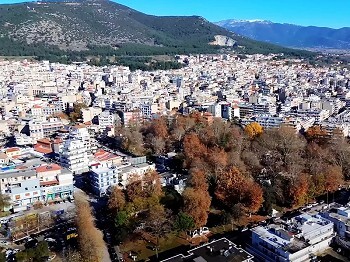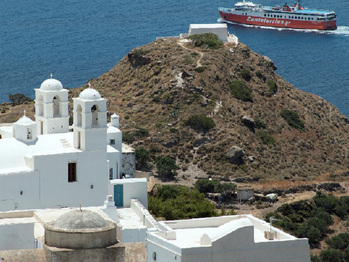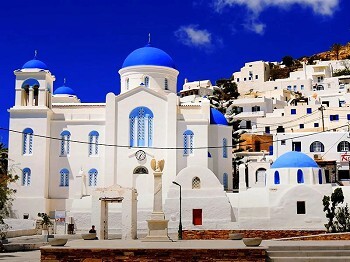At the sound of the word Athens, the first image that springs to mind for many is undoubtedly the Acropolis and the Parthenon. Athens in the 5th century BC serves as a pinnacle, echoing through time as a beacon of civilization. While other historical epochs hold their own significance, it's the unparalleled achievements of this era that have enshrined Athens as an everlasting symbol of greatness.
Acropolis, the eternal citadel
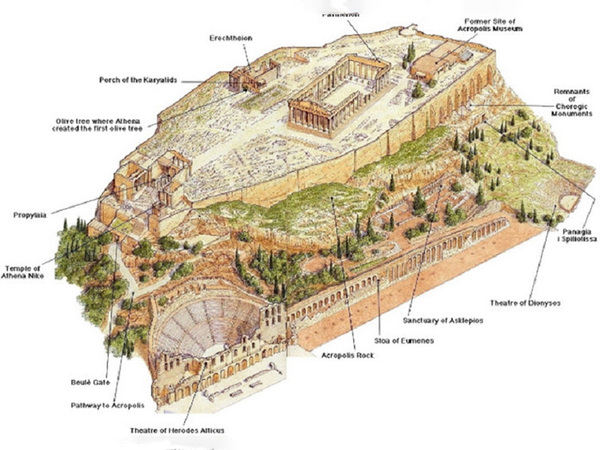
Imbued with the essence of freedom, respect for human rights, and democratic ideals, Athens stood as a bastion of enlightenment in ancient times. While much of the world languished under oppression and servitude, Athens flourished with its Popular Assembly and democratic governance. Its architectural marvels, including the Parthenon and the Propylaea, crafted by luminaries like Ictinus, Callicrates, and Mnesicles, adorn the cityscape, epitomizing artistic brilliance.
Perched at the heart of the Athenian basin, the Acropolis, often hailed as "the eternal citadel," majestically towers 1569 meters above sea level. This rocky prominence, spanning 300 meters in length and 150 meters in width, boasts a strategic location that has beckoned habitation since antiquity, offering panoramic vistas of the surroundings.
The Pelasgians, in ancient times, fortified the hill with formidable 6-meter-thick walls, shielding the royal palace and officer residences. Concurrently, an underground reservoir was carved on the northwest flank to secure the city's water supply during sieges. Despite the fervent construction activity, scant remnants endure from this era. Following the wane of the Mycenaean civilization, the Acropolis remained inhabited until the 7th century, coinciding with the abolition of monarchy.
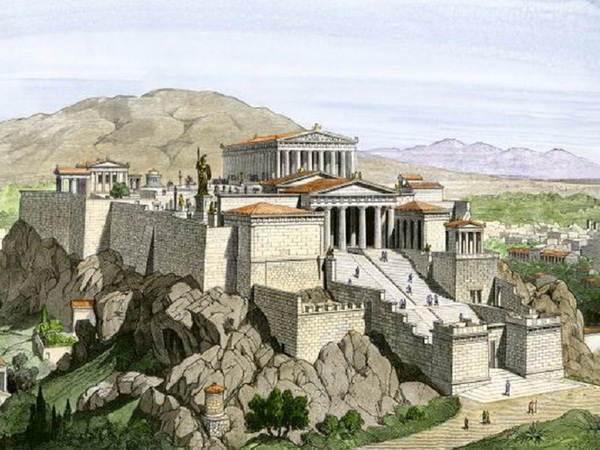
Scholars posit that the term "acropolis" gained prominence during the city's ascension, contrasting with the erstwhile lower city.
Post the 7th century, the Acropolis underwent a gradual metamorphosis into a sanctuary dedicated to divine reverence. This evolution culminated during the Archaic period when the Acropolis became synonymous with the veneration of the goddess Athena. The foundation for this trajectory was laid earlier with the establishment of the first temple in honor of Athena atop the site of a former Mycenaean palace. Subsequently, under Peisistratus in 566 BC, another temple graced the site.
The edifices adorning the Acropolis, erected between 447 - 406 BC, stand as testaments to unparalleled artistic prowess. Crafted by luminaries like Ictinus, Mnesicles, Callicrates, and the sculptor Phidias, these monuments exemplify the zenith of classical aesthetics amidst eras aspiring to eclipse it.
Dominating the Acropolis's zenith is the Parthenon, an epitome of classical ideals and the pinnacle of ancient Greek architecture. Constructed during Pericles' Golden Age, it replaced multiple antecedent temples, including the Pre-Parthenon razed by Persians in 480 BC.
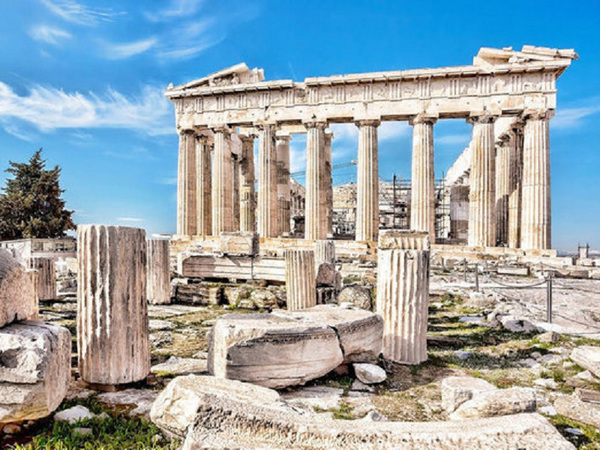
The Parthenon, a Doric peripteral octastyle temple, boasts 17 columns along its elongated flanks, spanning 3086x69.51 meters atop the stylobate.
Crafted predominantly from Pentelic marble, the temple, except for its wooden roof and porous stone foundations, epitomizes architectural finesse.
Intricate nuances of curvature embellish the Parthenon's structural elements, complemented by pioneering innovations that adorned its facade. Notably, the sculpted frieze introduces an Ionic motif into the predominantly Doric architecture, depicting the Panathenaic procession—an unprecedented departure from mythological themes. While fragments of this frieze are on display, a significant portion resides in the British Museum.
Themes ranging from Gigantomachia to scenes from the Trojan War adorn the temple's 92 metopes. The pediments, sculpted by Phidias, narrate myths associated with the goddess Athena. Despite fragmentary preservation, glimpses of these marvels can be savored in the Acropolis Museum and the British Museum.
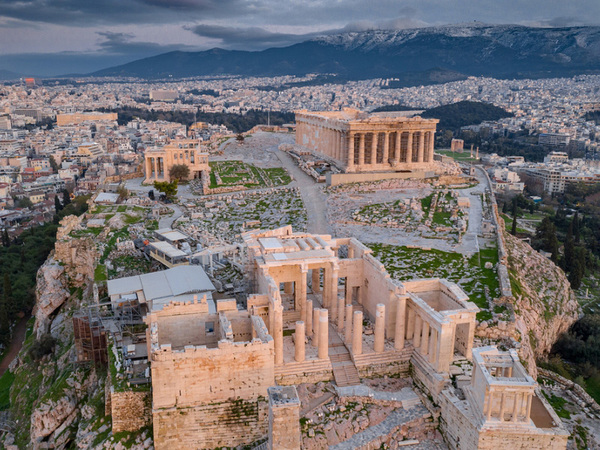
Adjacent to the Parthenon once stood the Temple of Rome and Augustus, now lost to time. Towards the northeast lie remnants of the Sanctuary of Zeus, while northward, the Erechtheion—the Acropolis's second-largest temple—graces the landscape. Fashioned entirely from Pentelic marble, its architectural configuration aimed to safeguard sacred relics while accommodating diverse cultic practices.
Noteworthy is the southern porch of the Erechtheion, adorned with the iconic Caryatids, originally six maidens supporting the structure. Though replaced by plaster replicas, originals find residence in the Acropolis Museum and the British Museum, their elegant figures still evoking awe.
Delving into the Erechtheion's inner sanctums, it's widely surmised that the eastern cell was devoted to Athena, while the western cells housed altars for Erechtheus, Hephaestus, and the hero Boutes.
While much of the temple's sculptural adornments have perished, remnants of its frieze and pediments endure. Crafted from dark-hued Eleusinian stone with Pentelic marble reliefs, the frieze narrates local myths. The pediments, depicting Athena's birth and her contest with Poseidon, offer glimpses into ancient narratives. Westward stood the Pandroseion, predating the Erechtheion and dedicated to Pandrosos, daughter of Cecrops, the mythical progenitor of Athens.




